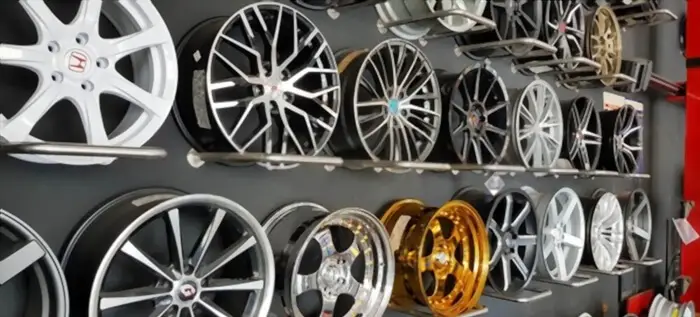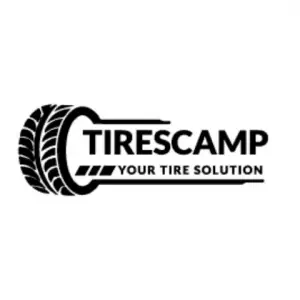For tires measuring 12.5 inches wide, choosing rims ranging from 8.0 to 10 inches in width is advised. Some sources recommend an 8-inch width for optimal compatibility. To ensure the right fit, consult the manufacturer’s specifications or tire sizing charts for your specific tire model.
Keep reading the article to know how wide of a rim for 12.5 tires.
How Wide Of A Rim for 12.5 Tires?
For a 12.5-inch tire, you’ll need approximately 8 to 10-inch rim.
However, it’s important to consider the recommended width range of the tire when choosing a rim. Otherwise, it’ll impact the performance, mileage, and fuel economy of your car.
However, this leads to the question of whether the 8” wheel is too narrow and not approved. Some users have reported that an 8” rim is not a problem for a 12.5” tire while some faced problems such as wear and tear.
So, it’s recommended to maintain tire pressures between 30 and 34 psi and to verify the accurate measurement of the 8” rims.
Moreover, many users and technicians recommend going for a 10-inch rim for a 12-inch tire for comfort and smooth performance.
But, if there are issues such as tire wear involving tire pressure, driving conditions, and load, you can adjust the tire pressure by performing a chalk test. Simply draw chalk lines across the tire tread line.
A properly inflated tire should press the chalk line uniformly across the ground. This means that the full chalk line will be imprinted on the ground. When a tire is over-inflated, it bulges (or crowns), and only the center of the line touches and is left on the ground.
What To Consider When Buying New Rims
When buying a new set of rims, it’s essential to consider the width, offset, load rating, etc.
Below, we will discuss all the factors that you should consider when purchasing a new set of wheels:
Rim Width:
Rim width is an essential factor to consider when selecting the best wheels for your car. This is especially true if you don’t plan to change the size of your tires. For example, you’ll face issues fitting the tires in a 7.5-inch wheel if the size is more than 235 millimeters.
Tires are designed to fit specific wheel widths. In most cases, you can only buy a wheel 2 to 3 inches wider or narrower than your tires.

Wheel Diameter:
Larger-diameter wheels are becoming popular nowadays. However, it is crucial to note that the larger the diameter, the more expensive the wheel and the tires used with it will be.
17-inch wheels offer the widest selection of wheels and tires and may be used with most brake systems.
When picking a rim, consider the one with a diameter less than half the diameter of the tires you plan to use. For instance, a 35-inch tire fits 15-inch wheels perfectly.
Offset:
Offset describes how far the wheel’s mounting surface is from its centerline. As a result, a zero offset distributes the wheel evenly throughout the mounting surface.
Positive offset causes the mounting surface to be closer to the outside of the rim, resulting in a narrower track width. For wheels with a negative offset, the opposite is true.
Backspacing:
Although backspacing and offset are similar, backspacing is based on the width of the rim.
Backspacing is the separation between the mounting surface and the inner lip of the rim. A positive offset is equivalent to deep backspacing, whereas a negative offset is equivalent to shallow backspacing.
Bolt Design:
Although some circumstances allow adapters to transform the bolt pattern, your wheels’ bolt patterns must match your axles.
Most Jeeps have five-lug wheels; current JKs have a 5-on-5 bolt pattern, while older TJs and XJs have a 5-on-4.5 bolt pattern. The first number represents the number of lugs, and the second represents the bolt circle’s diameter in inches.
Load Rating:
Wheels are also load-rated, just like car tires. The architecture of the wheel and the bolt pattern influence the load rating.
Forged wheels have the highest load rating, while steel wheels are frequently rated at lower loads than cast aluminum wheels. A wheel with more lug nuts and a bigger bolt circle will have a greater load rating regardless of the kind of construction because of how the load is distributed.
Center Bore:
This alludes to the wheel’s center hole. The bigger the bolt pattern, the larger the center bore of a wheel.
This is critical when fitting over locking hubs and fully floating axles. Unlike lug-centric rims that utilize lug nuts to center the wheel, hub-centric wheels utilize the center bore to position the rim on the axle.
Bead Seat:
With air pressure, the wheel bead seat ensures that the tire remains seated on the wheel. The wider and taller the seat bead is, the lower the PSI you can have on your tires without them coming off the wheel.
Beadlock wheels have clamp with bolts that secures the tire to the rim, preventing the tire from coming off even with no air pressure.
Frequently Asked Questions (FAQs):
Does Wheel Size Affect Ride Quality?
Indeed, ride quality varies significantly with wheel size. The wheel size has a significant impact on handling and noise levels as well. The optimal wheel size depends on the car and the driver’s priorities.
How Vital is Rim Quality?
Rims are more than just stylish additions to the car. A high-quality pair of rims will improve performance and provide a more comfortable ride. But the rim must fit the vehicle; otherwise, it will perform poorly.
When Must I Purchase New Wheels?
Your rims must be replaced each time they are damaged, cannot hold air, or create braking and handling issues. Even if the leak looks slow or the break seems insignificant, a damaged rim can result in a sudden rupture.
Are OEM Wheels Preferable to Aftermarket Ones?
OEM rims outperform 90% of aftermarket wheels on the consumer market in terms of overall finish quality, hardening process, casting or machining process, aluminum alloy makeup, conversion treatment process, and design durability testing.
Are Larger Wheels Better?
Even though wheels with bigger diameters should enhance handling and high-speed performance, the low-profile tires used with these rims offer a harsh ride and are noisier on the road. The added weight of the bigger wheels and tires may outweigh certain potential performance advantages.
Final Take
We hope this article helped answer the question, “How wide of a rim for 12.5 tires.” 12.5 tires should be fitted on rims 11.0 to 12.0 inches wide.
The factors discussed in this article should be considered when selecting the best wheels for your car.
